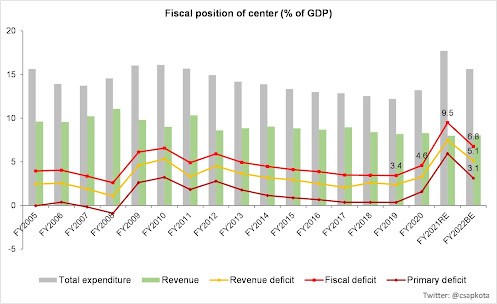In its February 2020 G-20 Surveillance Note, the IMF notes that a global recovery hinges on making rapid progress against the pandemic and maintaining effective economic support until the virus is defeated. In addition to substantial income and liquidity support by advance economies plus secured access to vaccines, the divergence among advanced and EMDEs is already striking: over 50% of emerging market and developing economies that were converging toward advanced economies (in terms of GDP per capita) are now expected to diverge during 2020-22.
While rich countries are securing vaccine supplies or commitment for future supplies and have deployed large fiscal and monetary measures, poor countries that have little fiscal space are grappling to secure access to vaccines. They need support to prevent setback in development gains, to maintain access to food and healthcare, and to invest in climate resilience and digital infrastructure.
To durably end the pandemic, global cooperation is important, including in meeting the financing needs for COVAX facility so that several emerging market and developing economies have access to vaccines in an equitable manner. Well-targeted fiscal and liquidity lifelines and monetary policy support are essential until constraints are eased meaningfully. However, macroprudential tools should be used to contain rising financial risks.
Some of the concerning issues outlined in the note are as follows:
- Inequalities are deepening, vulnerabilities are building, and economic potential is affected. For instance, the most vulnerable people have been hit hard with respect to loss of employment, and access to education and health services. Among those hit hard are young, low-skilled, women and informal sector workers. About 90 million people are expected to fall into extreme poverty during 2020-21. Prolonged unemployment could erode skills and learning gaps may widen due to lack of access to online learning.
- Many businesses will have substantially higher debt as they exit the pandemic, and once liquidity and regulatory forbearance lifelines are withdrawn, bankruptcies are likely to rise. Meanwhile, the crisis is eroding bank capital buffers and increasing pockets of pre-existing vulnerabilities in the non-bank financial sector.
- Higher public debt could constraints government response to react to future downturns and also crowd out investment if the differential between interest rate and growth turns less favorable.
- Growth outlook remains uncertain. A faster-than-projected immunization could lead to ¾ percent higher global output in 2021, with benefits mostly concentrated in advanced economies. If infections accelerate through 2021 and vaccination efforts go less smoothly than currently anticipated, global output could fall ¾ percent below the 2021 baseline, with losses concentrated in advanced economies.
- More intense and frequent weather-related disasters could amplify economic difficulties and social instability in vulnerable regions, triggering migration to the rest of the world.
The IMF argues that a global recovery relies on global leadership by the G-20. Some of the key highlights are as follows:
- Ensure vaccination is widely available to end the pandemic everywhere. Virus could mutate and new variants could spread if everyone is not covered in the vaccination drive. Many advanced economies have procured enough supplies to more than cover their population, but many poorer economies are struggling to procure enough. G-20 must ensure that low- and middle-income economies get access to safe and effective vaccines, including boosting funding for COVAX facility, assist in funding logistics for vaccine delivery, and assisting in treatments, therapies, and tests to contain outbreaks.
- Monetary policy should remain accommodative in most economies because economic disruptions are ongoing, unemployment is high, and inflation expectations remain subdued. Employing macroprudential tools to address risk to financial vulnerabilities while maintaining monetary policy measures to support growth are essential in the medium-term. Access to bilateral central bank swap lines can help to maintain access to liquidity and financial stability in some economies. However, for economies facing high inflationary pressures, some withdrawal of monetary support may be warranted. Uneven global recovery may mean unintended spillovers as some country being to withdraw policy support. In this situation, clear communication by central banks in advanced economies and strong policy frameworks in emerging market economies may be helpful.
- With unemployment still high, it is important to maintain fiscal support where possible (if fiscal space allows) to help the economy return to pre-existing income trends faster. In economies where vaccine may not be widely available and fiscal space is constrained, careful targeting of support to the most vulnerable, including reallocation of spending within the budget envelope, may be a viable option. It is important to avoid undue bankruptcies that could deteriorate employment losses. A credible medium-term fiscal framework that balances the need for short-term support against medium-term fiscal sustainability is needed, especially for economies with high debt and risks of increasing financing costs.
- With increasing vaccination and economic recovery, policy support should be transitioned to cater to the needs of the post-pandemic world. For instance, training and reskilling of unemployment people, investments in healthcare and education, and enhanced social protections will be helpful. For businesses, support should prioritize viable firms, restructuring and efficient out-of-court settlements and bankruptcy procedures so that resources and capabilities are not lost or left idle.
- Ensure a strong, green, and inclusive recovery. First, increase public infrastructure investment focusing on greening the economy to boost demand and strengthen resilience. Global economic boost is high during a time of economic slack if economies synchronize their spending while monetary policy remain accommodative. Agreement on mechanism to price externalities will be helpful, particularly forward guidance for phased-in, steadily rising carbon prices to meet emissions targets. Carbon pricing could be a part of a strategy to restore stronger fiscal finances.
- Promoting investment in the digital economy will help limit human capital erosion and strengthen inclusion. Ensuring widely accessible broadband internet helps to expand government service provision, facilitate remote learning, and create options for firms to expand their customer base. Digitization also helps to strengthen financial inclusion, and support convergence. Complementary reforms to ease barriers to entry can help strengthen innovation and investment.











